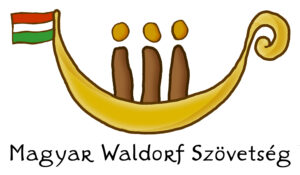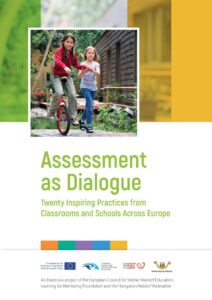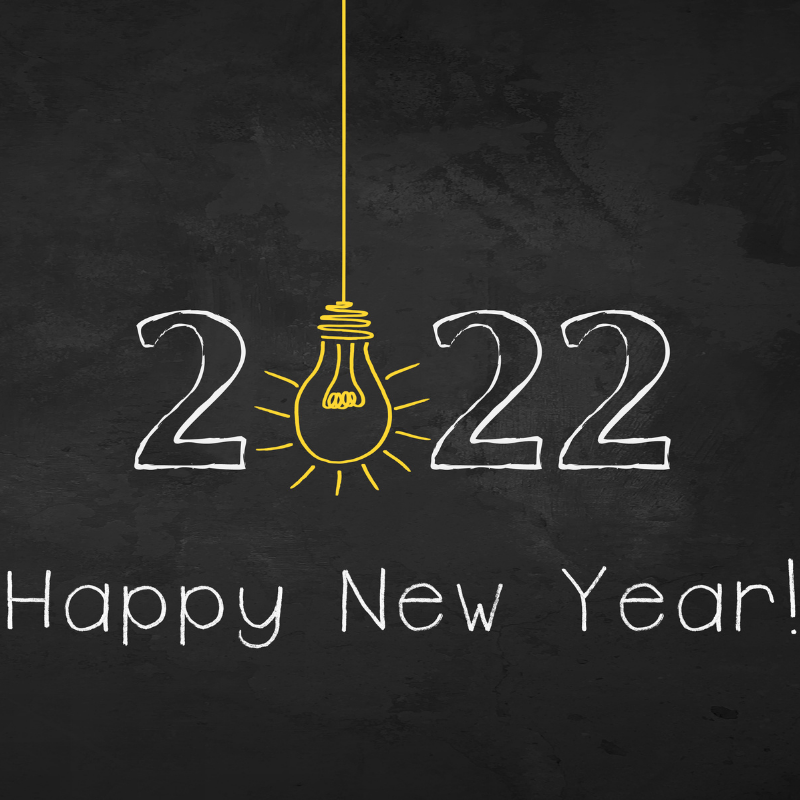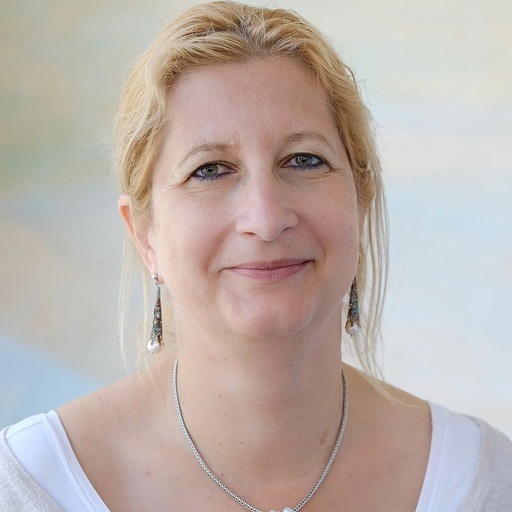Assessment as Dialogue
Twenty Inspiring Practices from Classrooms and Schools Across Europe
Learn moreRead the Book
About Us
This is a joint project of the Learning for Well-Being Foundation, the European Council of Steiner Waldorf Education, and the Hungarian Waldorf Federation.
Learning for Well-being Foundation
The Learning for Well-being Foundation (L4WB) was founded in the Netherlands in 2004 as an advocacy foundation working in co-creative partnerships to inspire people to involve children and young people in decisions that impact their lives, and to take responsibility and initiatives towards their holistic development.
European Council for Steiner Waldorf Education
![]()
The European Council for Steiner Waldorf Education (ECSWE) consists of 26 national Steiner Waldorf school associations, representing 775 Steiner Waldorf schools and 178.500 pupils across 28 European countries. Its mission is to support genuine Steiner Waldorf education and promote freedom in education in Europe.
Hungarian Waldorf Federation

The Hungarian Waldorf Federation (HWF) was established in 1997. The Federation grew out of the need of the schools and kindergartens to have a legal body that can represent the Waldorf organisations. The Federation is an umbrella organisation working together with 43 schools, 57 kindergartens and 7 teacher trainings.
About the Project
The project’s aim was to collect at least 15-20 practices on innovative and formative assessment methods. Our organisations had already been cooperating on the topic of assessment in the previous years. We started an assessment group in order to study what is already available in alternative assessment methods and what might be still done. Together we formulated our main question: how can the unfolding of the unique potential of each and every child/youngster through contextualised, individualised, participatory assessment processes that give learners a feeling of agency and self-efficacy be best supported?
This project aimed to look for and into already existing innovative and interesting good assessment practices. We do know that there are teachers and schools who work efficiently with alternative assessment methods, and it would be inspirational for educational settings to get acquainted with those in a well-documented way set into context by adding information about the schools, teachers, the methods and their acceptance by parents and pupils.
The results were published in the book titled “Assessment as Dialogue: Twenty inspiring practices from classrooms and schools around Europe”.
The Book

A strong message of hope communicated in this book is that change is not only possible but it has already happened in the classrooms and schools depicted in the twenty stories, from twelve diverse European countries, as well as in many other stories that are waiting to be told. Here, children experience formal learning as building naturally on their innate desire and ability to learn. Teachers and school leaders face many challenges, challenges that ask positive energy from them instead of having to deal with the negative fallout from fear of failure, whether among pupils or parents or among the teachers and school leaders themselves. Instead, teachers can focus on how to strengthen learning in the classroom, for each pupil and for themselves as well as in the wider learning community of the school.
To read the whole book, please click one of the buttons below. Prefer shorter sections? Read on.
Chapters
In this section you will get an overview of each chapter and you can also download them individually.
PART ONE: ENTERING SCHOOL
Hidden
Your content goes here. Edit or remove this text inline or in the module Content settings. You can also style every aspect of this content in the module Design settings and even apply custom CSS to this text in the module Advanced settings.
1. Step-by-Step: Starting Assessment Early to Support Learning (Romania)
Many questions can structure discussions of assessment – for example, what to assess or how to assess or why assessment is required – and the narrative below responds to the major question of when: when in a child’s education are key moments for assessment in order to enhance learning processes (and not only to measure expected outcomes) for diverse pupils, and how can this be related to the unfolding of each child’s unique potential?
Different answers to these questions are reflected in varied educational systems and practices. The assessment practices that will be described here unequivocally support the view that learning goes hand in hand with assessment that supports learning, and that therefore the two should begin together. This practice embodies pedagogy that is friendly to young children’s unfolding capacities and does not seek to impose the straitjacket of a grading system. It is heartening that such children-friendly assessment has been adopted on a national level in Romania through a constructive engagement with the national curriculum, even though the curriculum is squarely based on assigning grades. A national non-governmental organisation for early childhood development is responsible for this achievement through a combination of nurturant pedagogy and strategic engagement with key actors associated with the national curriculum.
2. Kindergarten to School: A Holistic-Diagnostic Assessment (Croatia)
The holistic diagnostic assessment carried out at the Osnovna Waldorfska škola Rijeka is an example of how to transform the evaluation of a child’s progress at one point in time into an opportunity to understand how the child learns and how best to support them in the crucial first years of school. The way the exercises are presented and carried out make it a constructive confidence building exercise and the knowledge that comes out of it is helpful for both teachers and parents. The greatest value of this method is the combination of the assessment itself with a thorough conversation with the parents and a personalised follow-up to increase the quality of understanding among carers and teachers for the child’s developmental and learning needs.
PART TWO: PRIMARY SCHOOL
Hidden
Your content goes here. Edit or remove this text inline or in the module Content settings. You can also style every aspect of this content in the module Design settings and even apply custom CSS to this text in the module Advanced settings.
3. Hand in Hand: Cooperation Between a Teacher and Parents in Assessment (Hungary)
The idea of collaborating with parents on assessment comes from recognising the fact that parents are the primary caretakers and co-educators of the child, and they can be the teacher’s most trustful allies and partners. By sharing their observations, experiences and feelings of the child they can offer meaningful insights for the teacher and together they can work effectively for the highest good of the child. This is what Krisztián Freigang has utilised in his assessment practice, the elements of which include a classroom observation by the parents and a parent-teacher conference.
4. Laterna Magica: The Magic of Interweaving Standardised and Formative Assessment (The Netherlands)
An innovative school in the Netherlands creatively tries to align ongoing personalised assessment – to guide the learning path of each pupil – with the periodic standardised testing required by the national Inspectorate of Education. The school has achieved significant success with this. Rich processes of assessment apply to academic subjects as well as to experiential learning through gardening, animal care, cooking and other activities. A portfolio is maintained by every pupil supported by a personal coach, and other school staff and parents have relatively easy access to the portfolio.
5. Learning to Learn: E-portfolios in a Primary School (the Netherlands)
The e-portfolios developed by ‘Mevolution’ attempt to transform school education by taking it beyond its current limits of imparting a set curriculum over the period of a school year to a large group of pupils of approximately the same age, and periodically testing pupils in a standardised format on their absorption of this curriculum.
Instead, these e-portfolios endeavour to capture the learning process across the school, responding to each pupil and each teacher while following carefully devised guidelines for learning. Children are encouraged to value learning as they experience it personally, with an e-portfolio for each child. Parallel to the feedback that children receive within their e-portfolios, each teacher maintains an e-portfolio within which experiences of effective teaching practices can be shared, to draw on each other’s insights. Parents also review and contribute to their child’s e-portfolio.
PART THREE: BRIDGING PRIMARY AND SECONDARY SCHOOL
Hidden
Your content goes here. Edit or remove this text inline or in the module Content settings. You can also style every aspect of this content in the module Design settings and even apply custom CSS to this text in the module Advanced settings.
6. A Point in Time: An Integral Assessment Framework (United Kingdom)
The Point in Time Assessment Framework got its name from being based on the regular collection of snapshot data across subjects, that then serve as a basis for conversations between teachers and senior and specialised colleagues about the progress of the pupils and how to best support them in their learning process. Three key questions are addressed in these pupil progress meetings: is the child making good progress? What does the child need from me next? And, do I have the resources to allow this child to make this progress? Continuing teacher development is a condition for success and a direct consequence of the peer-support and progress-review meeting structure. School development is also made possible within this method, as it offers the opportunity to show evidence of planning, implementation and impact to external bodies including the inspection services.
7. Dialogue Reports: Parents, Pupils and Teachers Together (Germany)
This assessment practice is based on the art of conversation and of cultivating interpersonal relationships. Rather than relying solely on the teacher’s judgement, all parties that play a role in the pupil’s development take part in an open dialogue covering different aspects of the pupil’s life. This dialogue enables a common language to be established between teacher, teaching assistants, parents and pupils, to facilitate better collaboration around a shared educational responsibility. Qualitative observations and exchange of different perspectives are followed by agreements on how to jointly support the pupil’s development and enliven their learning process.
8. Opening Mathematics: Dialogical Learning (Switzerland)
Dialogic learning is a teaching and formative assessment method that enlivens the way that understanding arises. Pupils engage deeply and methodically with the subject and are given space to write down their thoughts and feelings, describing their engagement and how they specifically approached the task they were given. It generally includes a cycle of three: 1. an open task given to the students by the teacher, 2. individual and collective feedback on what the pupils produced and 3. planning of the next step taken by the teacher, mainly based on the concrete feedback obtained from the students and where the class needs to make progress. Applied to mathematics, it approaches concepts through the language of understanding before the language of the understood is developed together, giving room for all pupils to engage in the process in a way particular to each one of them and possibly involving their daily lives. Formal concepts are thus not introduced at the beginning but arise as results of a joint undertaking that builds on awakening self-evidence.
Instead, these e-portfolios endeavour to capture the learning process across the school, responding to each pupil and each teacher while following carefully devised guidelines for learning. Children are encouraged to value learning as they experience it personally, with an e-portfolio for each child. Parallel to the feedback that children receive within their e-portfolios, each teacher maintains an e-portfolio within which experiences of effective teaching practices can be shared, to draw on each other’s insights. Parents also review and contribute to their child’s e-portfolio.
9. Meeting Day: A Smooth Transition Between Primary and Secondary School (Hungary)
Shifting from primary to middle school can be challenging not just for the children involved, but also for the teachers, as they have to deal with the burden and responsibility of deciding about the composition of the new class. In Waldorf education, where learning is regarded as a social activity, the class plays a crucial role in creating the ideal learning context for everyone. It’s not about picking the best pupils or bringing together children with similar interests or capabilities, but rather about building an inclusive heterogeneous learning community.
The Meeting Day, which is held months before the new school-year, provides time and space where pupils from the last year of the primary school meet both secondary school teachers and pupils coming from other schools and wishing to join them. It is a framework that helps the teachers assess where a set of pupils is, whether this particular school and class are the best for a given student to reach their full potential, and it also ensures a smooth transition from primary to secondary school.
PART FOUR: SECONDARY SCHOOL
Hidden
Your content goes here. Edit or remove this text inline or in the module Content settings. You can also style every aspect of this content in the module Design settings and even apply custom CSS to this text in the module Advanced settings.
10. Innovation within Vocational Education: Creating a Card Game (the Netherlands)
Assessment – as with learning and education more generally – resonates closely with the emotions, as highlighted in this example of a good practice. The emotions here relate to the acknowledgement of presence and a sense of belonging, that is especially important for pupils from immigrant homes in low-income areas. These emotions were addressed in the example below by a deeply sensitive teacher (whose father was an immigrant), who used the exercise of creating a card game together to encourage social coherence through shared pleasure in learning. The context is that of vocational education, a ‘stream’ to which immigrant pupils often find themselves assigned. Issues around assessment and supportive relationships have of course far wider relevance.
11. The Game of Ginter: History and Assessment (Austria)
The Game of Ginter is the name that pupils gave to the game of human history that Niko Ginter has created and practiced for 12 years at the Waldorf Klagenfurt school, Austria. The core idea of the game is to involve pupils in a simulation of the development process of a society and in the ability to make decisions that influence future events. The game is collaborative and has no winner or loser but serves as an enjoyable and powerful learning process and includes an assessment method, through observation of the game leader and the realisation of individual tasks. Learning through play, sparking natural curiosity and giving space to experience mistakes are some of the methodologies behind this practice. Niko Ginter has practiced this game with over 16 classes and 300 pupils and is now writing a book about his experience as a Steiner Waldorf teacher that includes a chapter on the game. He hopes to spread his practice and to create versions of it that can be adapted for other learning contexts.
12. Five Roles and a Unique Me: Evaluating Open End Assignments in a Creative Way (Belgium)
Sam Versweyveld combined the best of two worlds by introducing a framework developed in the context of part time artistic education into the four senior years of the Steiner Waldorf secondary school de Zonnewijzer. This framework serves as a basis for the guidance, formative and summative assessment of open-ended personal assignments that students carry out throughout the year. Rather than giving a grade on the overall performance, supervisors evaluate how their pupils have embodied five roles that are key to the development of a project: researcher, teamplayer, artist, craftsman and performer, as well as the 6th very important role that concerns the expression of their uniqueness within their work.
13. Continuous Assessment: A Framework of Practices that Underpin Learning (Germany)
Assessment is for learning and must therefore accompany learning closely and continuously – this is the essence of and the strong message from the practice of assessment that is described below. It is therefore not a practice as such but a framework of practices that endeavours to be seamlessly integrated in order to follow and support fully the collective journey of learning in a classroom and within this the personal learning path of every pupil. The context in which this is embedded is both the Steiner Waldorf principle that education should enable each pupil to become what they are, and the specific methodology of Waldorf schools that takes the form, for example, of main lesson blocks.
The wider context is state regulation of schooling, in this case the German situation of requiring grades to be given to pupils in senior classes, working towards the Abitur or end of secondary school exams. Pupils are enabled to go through the final state exams with the strength that can be drawn from a school curriculum which has helped build pupils’ abilities over years of assessment for learning rather than learning for assessment.
14. The Physics Menu: Using Gamification in Assessment (Hungary)
The Physics Menu is based around the concept that learning journeys can be as different and individual as children are. Although the expected learning outcome is set in the curriculum, the journey that takes one there may include various learning elements and learning experiences. A school where individual paths and autonomous choices are valued and children are encouraged to take responsibility for their own learning can be a perfect environment for a practice that builds exactly on these values. To make the learning process more effective and to maintain motivation, the practice also includes a gamification assessment element. This helps the pupils follow their progress, gives the teacher instant and continuous feedback about the effectiveness of the teaching, provides the opportunity to adapt or correct both the teaching and the learning process during the course, and helps to provide personalised and formative assessment.
15. Creative Thinking Skills: A Philosophy of Integrated Education (Republic of Ireland)
The Crossfields Institute Level 2 Integrated Education Diploma is more than a qualification, it is a philosophy of integrated education and it can serve as a base to structure a school-wide assessment policy that acknowledges creative thinking skills and the importance of enabling pupils to connect to their unique potential and capacity to learn independently. The three mandatory modules, the Independent Project, Creative Thinking Skills and Personal and Social Learning Skills, support pupils to: follow their passion and explore an interest or career aspiration in depth, use a range of creative thinking skills to make connections and use different perspectives to communicate ideas and concepts and develop pupil’s responsibility for their own learning. The Raheen Waldorf school is a small secondary school in Ireland, and implementing this progressive and recognised qualification is supporting the pupils’, the teachers’ and the school’s development all at once.
16. Assessing the Arts: Nurturing Creativity (the Netherlands)
Change requires courage, and changing a system of assessment arguably requires a special courage, more so when the assessment system includes national tests at the end of secondary school. In the story that follows, a secondary school – set up sixteen years ago to embody innovation, notably around arts education – struggles with traditional assessment that contradicts its original innovative and creative impulse. The school’s new director attempts to lead a process of change in pedagogy to precede changes in assessment that pupils, staff and parents speak out for. This process is primarily one of dialogue and discussion, in preparation for the reorganisation that is required to align pedagogy and assessment with innovation that nurtures creativity.
17. A Personal Portfolio: Socratic Dialogue in a Secondary School (Finland)
The essence of this practice is to enable pupils to become an active part of the teaching and assessment process. For thirteen years, Eeva taught Finnish language and literature to class 9, 10, 11 and 12 pupils, without textbooks and tests. Her lesson structure is based on a Socratic dialogic teaching method, and has space for personalised feedback and individual work in every class. Pupils are given the opportunity to engage with all subjects, through the dialogue and then through an assignment that she provides personalised comments on, to support each pupil in their individual evolution. With the help of a course guide, the pupils can plan their journey and select the assignments they would like to include, and discover how they can best show their capabilities in line with the instructions. At the end of the main lesson block, pupils bring all of their work together in a portfolio, make the necessary adjustments, and hand it in to receive a summative evaluation, consisting of an overall grade and a written comment.
PART FIVE: LEAVING SCHOOL
Hidden
Your content goes here. Edit or remove this text inline or in the module Content settings. You can also style every aspect of this content in the module Design settings and even apply custom CSS to this text in the module Advanced settings.
18. The Art of Writing Good Reports: An Alternative to Grades at the End of Secondary School (Denmark)
Assessment – as with learning and education more generally – resonates closely with the emotions, as highlighted in this example of a good practice. The emotions here relate to the acknowledgement of presence and a sense of belonging, that is especially important for pupils from immigrant homes in low-income areas. These emotions were addressed in the example below by a deeply sensitive teacher (whose father was an immigrant), who used the exercise of creating a card game together to encourage social coherence through shared pleasure in learning. The context is that of vocational education, a ‘stream’ to which immigrant pupils often find themselves assigned. Issues around assessment and supportive relationships have of course far wider relevance.
19. The New Zealand Certificate of Steiner Education: A Route to Tertiary Education (United Kingdom)
The New Zealand Certificate of Steiner Education enables the St Michael Steiner School to offer a secondary education leaving certificate whilst keeping the essence of their curriculum and limiting the impact of summative assessment on their teaching methods. Especially in the social sciences, the assessment criteria within the NZCSE, e.g. to examine perspectives and demonstrate empathy for people in a specified context, can be adapted to nearly any content, and in the subjects where that is not the case, teachers are encouraged to submit revisions. Instead of formal examinations, pupils hand in a series of assignments throughout the year, with the personalised feedback, support and challenges that they need. The assessment method supports the learning process, develops autonomy of pupils and favours collaboration between teachers.
20. Assessment for Life: A Second Chance for Early School Leavers (Hungary)
Traditional education and assessment may or may not work for a given student. If it doesn’t, it usually results either in a self-compromising process of trying to fit in, in school failure with the students disconnecting from their peers and from education itself, or in a lengthy process of finding a new school that is more inclusive and fitting for them.
But what happens to those who have already gone through all these and dropped out of the system altogether? Those on whom not just education has given up but who have also given up on themselves. Is there a way to support them in getting back on track for employment through gaining a good education, and most importantly to prepare to face life with all its current challenges as resilient adults with relevant life skills and values? This is exactly what a small school in the heart of Budapest is committed to do.
Events
To deepen the message of the book and to harvest its results, the parties have decided to make 2022 the “Year of Assessment”. Various events and workshops are planned to be held throughout the year. Stay tuned!

03 dec 2021
Book launch at the 83rd QoC Talk
Join us at our book launch on the meeting of the Working Group on the Quality of Childhood

1 Jan 2022
Year of Assessment begins
New adventures are just around the corner. Happy New Year!
Contact Us

Márti Domokos
Project Coordinator
European Council for Steiner Waldorf Education
By clicking the Submit button, you agree that you have read, understand and accept our Privacy Policy.
A Special Thanks to the Erasmus+ Programme of the European Union

